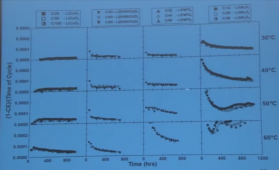This video is great. Thanks for posting it. Really appreciate it. Seriously.
Active Thermal Management all the way. It's more complicated, but if I insulate my LiFePO4 battery cell mass, and be careful about failure modes, my hope is that keeping them consistently below 25 deg C will reduce calendar aging, extending usable operating lifetime. Trying to include a per cell lifetime histogram of temperature vs time spent at that temperature, voltage vs time spent at that voltage, etc. in a logging module to additionally assist with cell life analysis going forward. Just have a loop every one second, add one second to the bin of the histogram that represents current temperature and voltage.
Counting cycles is also a topic. I would like to additionally be able to monitor how many Ah charged and discharged at a given voltage and given temperature. These are the critical aging bits that I want to see the data from my batteries in a year or more.
From what I have read, there is a memory effect, but that the magnitude of the memory effect is so small (<2% if my hazy memory is operating nominally) that I feel sort of pedantic pointing it out, and feel that you're colloquially accurate in assessing it as no memory effect. 50+2 or 50-2 is still only 48-52% which does not meaningfully affect the critical mission outcome of maintaining middle SOC to encourage longer battery life.





